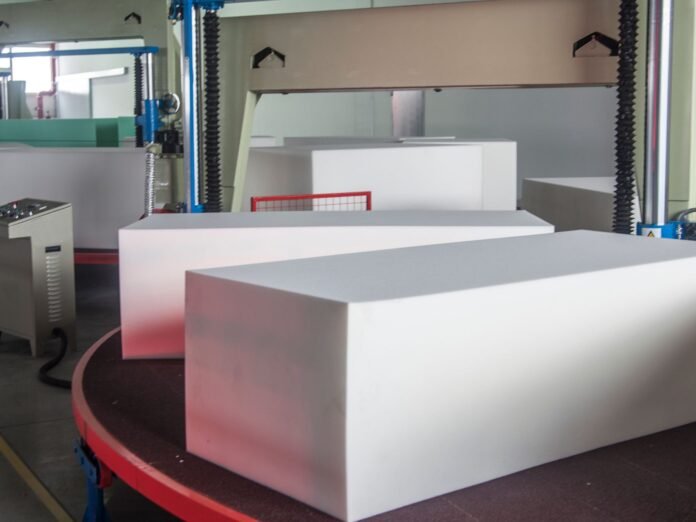Memory foam and latex have become top-notch materials for crafting high-quality mattresses, each for distinct reasons.
While both deliver excellent comfort and pressure relief, significant
disparities exist between memory foam and latex mattresses, particularly in price, support, and sustainability.
When navigating Mexico’s mattress market, you will likely encounter memory foam and latex, prevalent in some of the finest mattress offerings. What are their similarities and differences, and which is best?
Memory foam mattresses, widely embraced since the 1990s, are known for their softness and comfort. Memory foam is made from polyurethane and additives that increase viscosity and density. Memory foam has open bubbles or cells, creating a matrix through which air moves. Upon contact with heat, memory foam softens and molds to the shape of your body for individualized comfort and support. As a result, when you rise, the mattress retains the indentation of your body.
In contrast, latex boasts a more sustainable and natural production process. Latex is made by mixing sap from the rubber tree with non-toxic materials, forming a foam that is baked. The outcome is a durable, breathable, non-toxic material often found in high-quality organic mattresses. Two different types of latex foam are used in mattresses: Dunlop latex and Talalay latex.
Dunlop latex tends to be denser and provides a firmer, more supportive feel, while Talalay latex is softer and offers greater cushioning. On the other hand, memory foam mattresses are renowned for their plushness, delivering body-hugging pressure relief and sink-in softness.
Noteworthy distinctions include temperature regulation, where memory foam tends to sleep warmer due to its utilization of body heat, while latex is more breathable and cooling.

Additionally, latex scores high on sustainability and cleanliness, being organic, hypoallergenic, antimicrobial, and dust mite resistant. Latex mattresses also exhibit greater durability, with a lifespan of up to 20 years compared to the average 10-year lifespan of memory foam mattresses.
Another difference is motion transfer, with memory foam excelling in limiting movements and providing motion isolation, making it ideal for couples. Latex, however, can be buoyant, potentially resulting in some motion transfer.
The most prominent difference lies in the price, with latex mattresses being notably expensive due to their quality, durability, and eco-friendliness. Luxury latex beds in North America can start at over 17,000 pesos/1,000 USD, while memory foam mattresses are widely accessible and more budget-friendly, often starting at under 3,420 pesos/200 USD.
In summary, choose a memory foam mattress if you are on a tighter budget, a side sleeper, or share a bed and prioritize motion isolation. Purchase a latex mattress if you seek a cleaner, greener sleep, are a hot sleeper, or desire a long-lasting mattress and don’t mind the higher upfront costs.
Are you looking for a mattress for your home in Mexico? Whether you need a mattress or a whole condo of furniture, we can help you easily furnish your home in Vallarta. Visit us at our Puerto Vallarta store at 363A Constitucion or Bucerias store at Heroes de Nacozari 126. If you are not currently in Mexico, email us at furniture@solutionsmexico.com or text us on WhatsApp at +52 322 136 5156. And remember, you can always reach us through our website: www.solutionsmexico.com.


